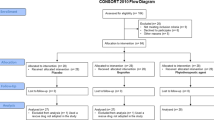Abstract
Background and Purpose
Sufficient evidence exists recommending the use of honey in the management of wounds. Studies revealed that the healing effect of honey could be classified by its antibacterial and anti-inflammatory properties of its components. Since surgical extraction of impacted molars is one of the most common operations in the oral cavity and the postoperative pain disturbing the patient may reduce the quality of health service, this study aimed to assess the analgesic potential of Manuka honey application into the extraction socket of impacted mandibular third molars.
Methods
This randomized split-mouth controlled study included 33 patients undergoing impacted bilateral lower third molars surgery under local anesthesia (n = 66). Randomization was carried out by coin flipping. One of the two impacted third molars was assigned to treatment group (Manuka honey applied just before suturing), other side to control group (nothing applied). Postsurgical pain was evaluated using visual analogue scale (VAS) of faces 7 days after extraction. The total analgesic dose used was also evaluated.
Results
In treatment group, postoperative VAS scores were significantly lower compared to that in control group regarding first and second days postoperatively (P < 0.05). Total analgesic intake in the control group was significantly higher (P = 0.0001).
Conclusion
This study demonstrated that intrasocket application of Manuka honey after surgical extraction of impacted lower third molar is an effective method for reducing acute postsurgical pain.



Similar content being viewed by others
References
Molan PC, Betts JA (2004) Clinical usage of honey as a wound dressing: an update. J Wound Care 13(9):353–356. https://doi.org/10.12968/jowc.2004.13.9.26708
Khan FR, Ul Abadin Z, Rauf N (2007) Honey: nutritional and medicinal value. Int J Clin Pract 61(10):1705–1707. https://doi.org/10.1111/j.1742-1241.2007.01417.x
Moore OA, Smith LA, Campbell F, Seers K, McQuay HJ, Moore RA (2001) Systematic review of the use of honey as a wound dressing. BMC Complement Altern Med 1:2. https://doi.org/10.1186/1472-6882-1-2
Wijesinghe M, Weatherall M, Perrin K, Beasley R (2009) Honey in the treatment of burns: a systematic review and meta-analysis of its efficacy. N Z Med J 122(1295):47–60 PMID: 19648986
Al-Waili N, Salom K, Al-Ghamdi AA (2011) Honey for wound healing, ulcers, and burns; data supporting its use in clinical practice. Sci World J 11:766–787. https://doi.org/10.1100/tsw.2011.78
Yaghoobi R, Kazerouni A, Kazerouni O (2013) Evidence for clinical use of honey in wound healing as an anti-bacterial, anti-inflammatory anti-oxidant and anti-viral agent: a review. Jundishapur J Nat Pharm Prod 8(3):100–104. PMCID: PMC3941901
Gulati S, Qureshi A, Srivastava A, Kataria K, Kumar P, Ji AB (2014) A prospective randomized study to compare the effectiveness of honey dressing versus povidone iodine dressing in chronic wound healing. Indian J Surg 76(3):193–198. https://doi.org/10.1007/s12262-012-0682-6
Hwang SH, Song JN, Jeong YM, Lee YJ, Kang JM (2016) The efficacy of honey for ameliorating pain after tonsillectomy: a meta-analysis. Eur Arch Otorhinolaryngol 273(4):811–818. https://doi.org/10.1007/s00405-014-3433-4
Boroumand P, Zamani MM, Saeedi M, Rouhbakhshfar O, Hosseini Motlagh SR, Aarabi Moghaddam F (2013) Post tonsillectomy pain: Can honey reduce the analgesic requirements? Anesth Pain Med 3(1):198–202. https://doi.org/10.5812/aapm.9246
Singh V, Pal US, Singh R, Soni N (2014) Honey a sweet approach to alveolar osteitis: a study. Natl J Maxillofac Surg 5(1):31–34. https://doi.org/10.4103/0975-5950.140166
Mandal MD, Mandal S (2011) Honey: its medicinal property and antibacterial activity. Asian Pac J Trop Biomed 1(2):154–160. https://doi.org/10.1016/S2221-1691(11)60016-6
Simon A, Traynor K, Santos K, Blaser G, Bode U, Molan P (2009) Medical honey for wound care—still the ‘latest resort’? Evid Based Complement Alternat Med 6(2):165–173. https://doi.org/10.1093/ecam/nem175
Schneider M, Coyle S, Warnock M, Gow I, Fyfe L (2013) Anti-microbial activity and composition of manuka and portobello honey. Phytother Res 27(8):1162–1168. https://doi.org/10.1002/ptr.4844
Kwakman PH, Zaat SA (2012) Antibacterial components of honey. IUBMB Life 64(1):48–55. https://doi.org/10.1002/iub.578
Mavric E, Wittmann S, Barth G, Henle T (2008) Identification and quantification of methylglyoxal as the dominant antibacterial constituent of Manuka (Leptospermum scoparium) honeys from New Zealand. Mol Nutr Food Res 52(4):483–489. https://doi.org/10.1002/mnfr.200700282
Rathnam A, Madan N, Madan N (2010) The language of pain: a short study. Contemp Clin Dent 1(3):142–145. https://doi.org/10.4103/0976-237X.72778
Pippi R (2017) Post-surgical clinical monitoring of soft tissue wound healing in periodontal and implant surgery. Int J Med Sci. 14(8):721–728. https://doi.org/10.7150/ijms.19727
Schneider LA, Korber A, Grabbe S, Dissemond J (2007) Influence of pH on wound-healing: a new perspective for wound-therapy? Arch Dermatol Res 298(9):413–420. https://doi.org/10.1007/s00403-006-0713-x
Molan PC (1999) The role of honey in the management of wounds. J Wound Care 8(8):415–418. https://doi.org/10.12968/jowc.1999.8.8.25904
Schmidlin PR, English H, Duncan W, Belibasakis GN, Thurnheer T (2014) Antibacterial potential of Manuka honey against three oral bacteria in vitro. Swiss Dent J 124(9):922–924 PMID: 25253413
Malhotra R, Ziahosseini K, Poitelea C, Litwin A, Sagili S (2017) Effect of Manuka honey on eyelid wound healing: a randomized controlled trial. Ophthal Plast Reconstr Surg 33(4):268–272. https://doi.org/10.1097/IOP.0000000000000743
Owoyele BV, Oladejo RO, Ajomale K, Ahmed RO, Mustapha A (2014) Analgesic and anti-inflammatory effects of honey: the involvement of autonomic receptors. Metab Brain Dis 29(1):167–173. https://doi.org/10.1007/s11011-013-9458-3
Tonks AJ, Dudley E, Porter NG, Parton J, Brazier J, Smith EL, Tonks A (2007) A 5.8-kDa component of manuka honey stimulates immune cells via TLR4. J Leukoc Biol 82(5):1147–1155. https://doi.org/10.1189/jlb.1106683
Funding
This study was funded by Damascus University, Syria (Grant Number: 749).
Author information
Authors and Affiliations
Corresponding author
Ethics declarations
Conflict of interest
The authors declare that they have no conflict of interest.
Ethical Approval
All procedures performed in studies involving human participants were in accordance with the ethical standards of institutional and national research committee and with the 1964 Declaration of Helsinki and its amendments.
Informed Consent
Informed consent was obtained from all individual participants included in the study.
Rights and permissions
About this article
Cite this article
Al-Khanati, N.M., Al-Moudallal, Y. Effect of Intrasocket Application of Manuka Honey on Postsurgical Pain of Impacted Mandibular Third Molars Surgery: Split-Mouth Randomized Controlled Trial. J. Maxillofac. Oral Surg. 18, 147–152 (2019). https://doi.org/10.1007/s12663-018-1142-z
Received:
Accepted:
Published:
Issue Date:
DOI: https://doi.org/10.1007/s12663-018-1142-z




